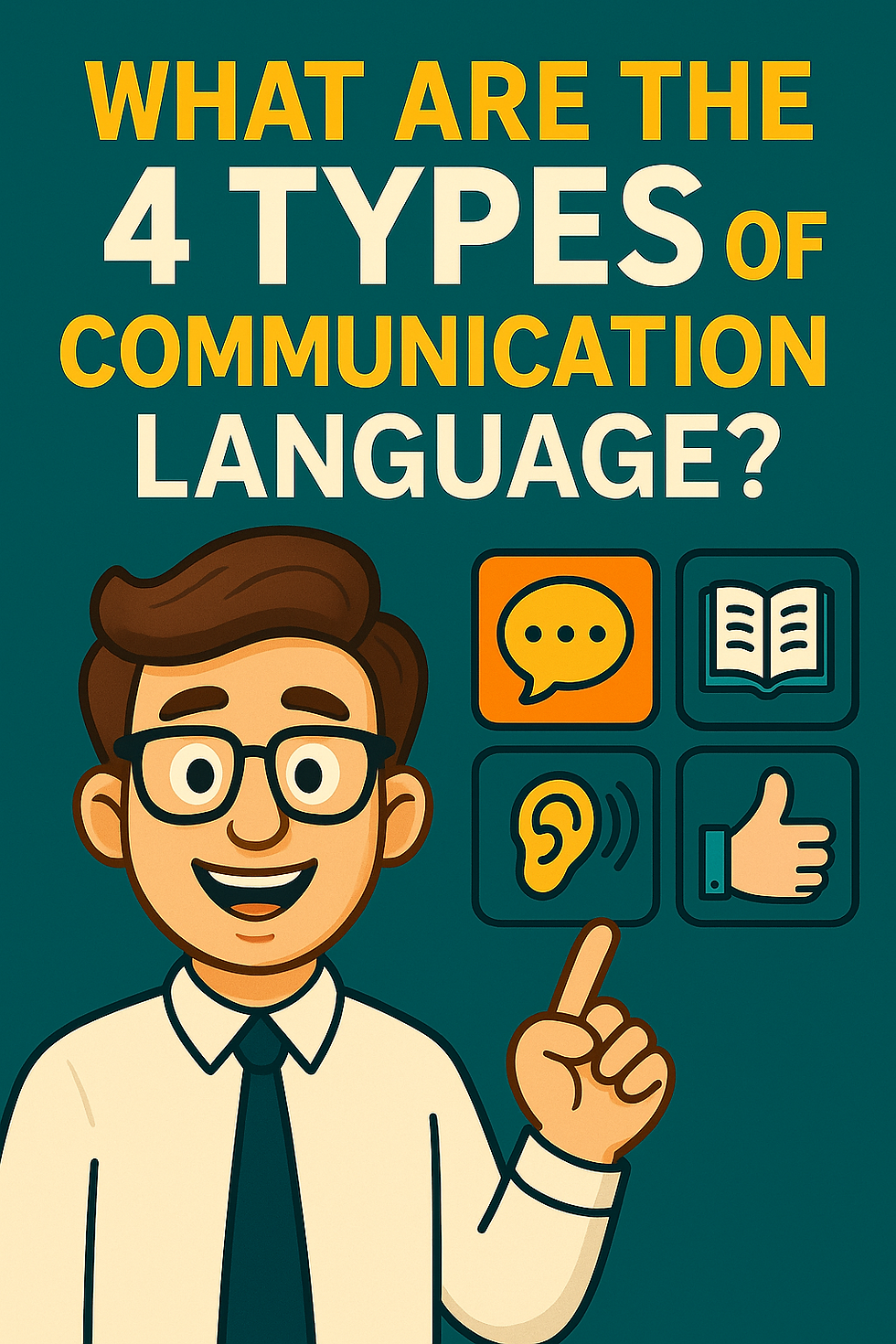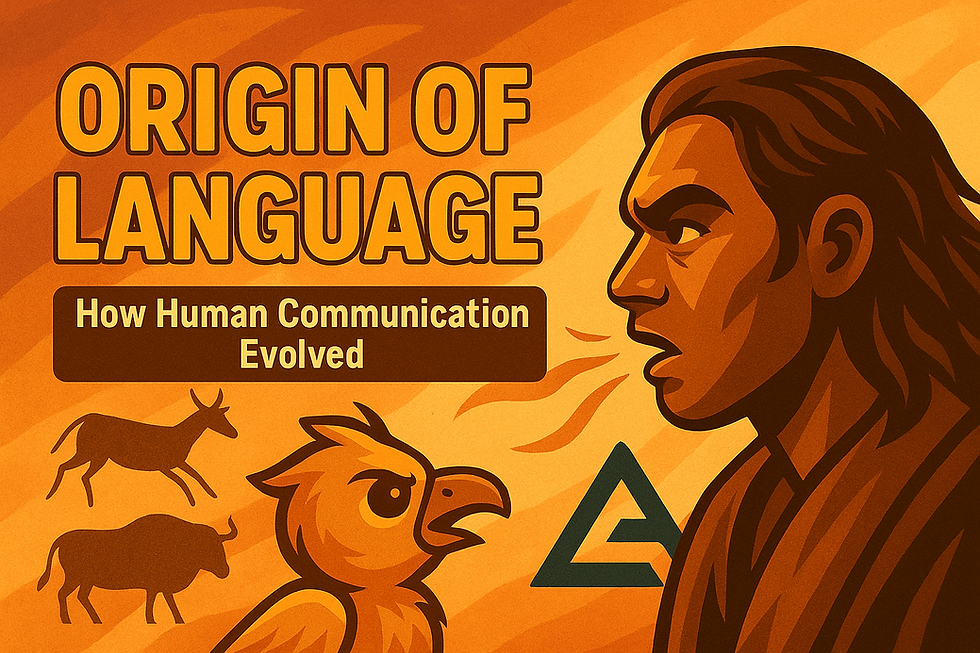What are the 4 Types of Communication Language?
- James Pite
- Aug 28
- 4 min read

Effective communication is the cornerstone of successful personal and professional relationships. Understanding the four primary types of communication language, verbal, non-verbal, written, and visual, enables individuals and organizations to convey messages clearly and foster better collaboration.
This article explores these four types in depth, providing practical insights, examples, and strategies to enhance communication across various contexts.
1. Verbal Communication
Verbal communication involves the use of spoken or signed language to exchange information. It is the most direct form of communication and occurs in face-to-face conversations, phone calls, video conferences, or presentations.
Key Characteristics
Real-time interaction: Verbal communication often happens in the moment, allowing for immediate feedback.
Tone and pitch: The way words are spoken (e.g., tone, pitch, and pace) significantly impacts the message’s meaning.
Examples: Team meetings, one-on-one discussions, speeches, or phone conversations.
Benefits
Enables quick clarification of misunderstandings.
Builds rapport through personal engagement.
Conveys emotions and intent effectively through vocal nuances.
Challenges
Misinterpretation due to accents, dialects, or unclear speech.
Lack of a permanent record unless recorded.
Cultural differences in verbal etiquette can lead to confusion.
How to Improve
Practice active listening to ensure mutual understanding.
Use clear, concise language to avoid ambiguity.
Adapt tone and style to suit the audience, whether formal or informal.
Example: During a team meeting, a manager uses clear verbal instructions to assign tasks, ensuring everyone understands their responsibilities through open dialogue and follow-up questions.
2. Non-Verbal Communication
Non-verbal communication encompasses body language, facial expressions, gestures, posture, and eye contact. It often conveys more information than words alone and can reinforce or contradict verbal messages.
Key Characteristics
Subconscious cues: Many non-verbal signals are instinctive and may not be intentionally controlled.
Context-dependent: A gesture’s meaning can vary across cultures (e.g., a thumbs-up may be positive in some cultures but offensive in others).
Examples: Nodding to show agreement, crossing arms to indicate defensiveness, or maintaining eye contact to build trust.
Benefits
Enhances verbal messages by adding emotional context.
Helps gauge audience reactions (e.g., boredom, excitement).
Can communicate universally when language barriers exist.
Challenges
Misinterpretation due to cultural differences.
Inconsistent signals (e.g., saying “I’m fine” while frowning).
Requires awareness to control unintended cues.
How to Improve
Observe others’ non-verbal cues to better understand their emotions.
Practice self-awareness to align your body language with your message.
Study cultural norms to avoid miscommunication in diverse settings.
Example: In a job interview, a candidate’s confident posture and steady eye contact reinforce their verbal answers, creating a positive impression.
3. Written Communication
Written communication involves conveying messages through text, such as emails, reports, memos, or text messages. It is widely used in professional settings for documentation and clarity.
Key Characteristics
Permanent record: Written communication can be revisited and referenced later.
Structured format: Often follows specific formats (e.g., business letters, academic papers).
Examples: Emails, project proposals, social media posts, or company policies.
Benefits
Provides clarity and precision for complex information.
Allows time for crafting thoughtful responses.
Reaches a wide audience across time zones.
Challenges
Lacks tone and immediate feedback, which can lead to misinterpretation.
Requires strong writing skills to avoid ambiguity.
Time-consuming to produce and review.
How to Improve
Use clear, concise language and avoid jargon unless necessary.
Proofread for grammar, spelling, and clarity before sending.
Tailor the tone and style to the audience (e.g., formal for reports, casual for team chats).
Example: A well-crafted email outlining project deadlines and expectations ensures all team members are aligned without the need for a meeting.
4. Visual Communication
Visual communication uses images, charts, graphs, videos, and other visual aids to convey information. It is highly effective for presenting complex data or engaging audiences emotionally.
Key Characteristics
Visual appeal: Engages audiences through colors, shapes, and designs.
Quick comprehension: Visuals can simplify complex ideas (e.g., a chart showing sales trends).
Examples: Infographics, presentations, videos, or diagrams.
Benefits
Enhances understanding of abstract or numerical data.
Captures attention and increases retention of information.
Crosses language barriers when designed effectively.
Challenges
Requires design skills to create effective visuals.
Overuse of visuals can overwhelm or distract audiences.
May not convey nuanced or detailed information alone.
How to Improve
Use visuals to complement, not replace, other forms of communication.
Ensure visuals are clear, relevant, and culturally appropriate.
Leverage tools like Canva or PowerPoint for professional designs.
Example: A company uses an infographic in a presentation to illustrate quarterly performance metrics, making the data easier to understand at a glance.
Integrating the Four Types for Effective Communication
While each type of communication language has unique strengths, combining them strategically can maximize impact. For instance:
Meetings: Use verbal communication for discussion, non-verbal cues to gauge reactions, written handouts for reference, and visual aids like slides to clarify points.
Emails: Pair clear written content with visual attachments (e.g., charts) to enhance understanding.
Presentations: Blend verbal delivery, non-verbal confidence, written notes, and visual slides for a cohesive message.
Practical Tips for Integration
Know your audience: Tailor the mix of communication types to their preferences and needs.
Balance clarity and engagement: Use visuals to simplify complex ideas and verbal or written communication to provide details.
Practice consistency: Ensure verbal and non-verbal messages align to avoid mixed signals.
Why Understanding These Types Matters
Mastering the four types of communication language empowers individuals and organizations to:
Build stronger relationships through clear and empathetic exchanges.
Enhance workplace efficiency by choosing the right communication method for the context.
Navigate diverse settings, from casual team chats to formal presentations, with confidence.
By developing skills in verbal, non-verbal, written, and visual communication, you can adapt to any situation, convey ideas effectively, and foster collaboration across teams and cultures.





Comments